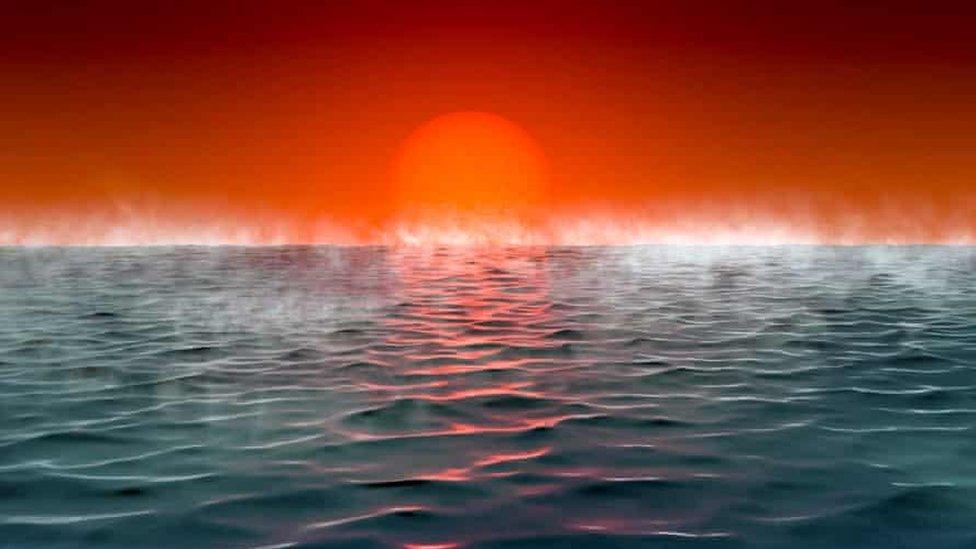Alien life could be living on big 'Hycean' exoplanets
- Published
- comments

Experts have been looking for aliens in all the wrong places, according to new research.
For years, scientists have looked for planets of a similar size, temperature and atmosphere to Earth. As our planet is the only one we know of that has life, it made sense for researchers to look for more worlds like our own.
But, the universe is full of different types of planets and Earth-like worlds are pretty hard to find.
So, astronomers from the University of Cambridge believe there are more promising possibilities when it comes to finding life.
The team at Cambridge have identified a new class of planet, called 'Hycean' planets. More than twice the size of Earth, these hot, ocean-covered worlds have hydrogen-rich atmospheres.
Hydrogen is the lightest and most common element in the universe. It's a clear gas that doesn't smell.
The Sun is made up of mostly hydrogen. The pressure on the Sun is so high that hydrogen atoms are converted to helium atoms. This conversion is called fusion and it releases heat and energy that we see as sunlight.
The most common place to find hydrogen on Earth is in water, which is a combination of hydrogen and oxygen.
Hycean planets are common throughout our Milky Way galaxy and could be home to microscopic life similar to those that exist in Earth's harshest environments.
Described as smaller versions of our solar system worlds, Uranus and Neptune, "Hycean planets open a whole new avenue in our search for life elsewhere," says lead author Nikku Madhusudhan, from the Institute of Astronomy at the University of Cambridge.
Hycean planets are also different to each other. Some are locked in place as they orbit their stars, with one scorching-hot dayside and one constantly cold and dark nightside. But researchers insist life could exist even in such extreme conditions, for example, in the nightside waters of locked worlds.
"It's exciting that habitable conditions could exist on planets so different from Earth," study co-author Anjali Piette, also from Cambridge's Institute of Astronomy said.
The Big Question: How big is space?
We need to be open about where we expect to find life and what form that life could take, as nature continues to surprise us in often unimaginable ways.
The search for Hycean life could start soon. The team at Cambridge have identified a number of 'exoplanets' - worlds outside of the solar system - where atmospheres could be examined by Nasa's $9.8 billion (ВЈ7.1bn) James Webb Space Telescope, which is scheduled to launch later this year.
The conditions on Hycean worlds mean it's easier to detect bio-signatures, which is a fancy term for signs of life.
Those potential planets orbit small, dim stars called red dwarfs, between 35 and 150 light-years from Earth.
"A bio-signature detection would transform our understanding of life in the universe," Madhusudhan said.
"We need to be open about where we expect to find life and what form that life could take, as nature continues to surprise us in often unimaginable ways."
- Published15 May 2020
- Published7 June 2021
